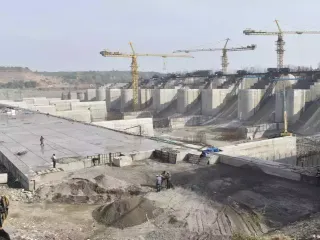The Kaimur Range, a captivating stretch of hills, forms a significant part of the Vindhya Range in central India. Stretching across the states of Bihar, Uttar Pradesh, and Madhya Pradesh, this range holds a wealth of historical, geological, and ecological significance.
Geological Significance:
Geologically, the Kaimur Range is characterized by its ancient rock formations, offering valuable insights into the Earth's history. The range's unique geological composition contributes to its distinct topography and biodiversity.
Historical Importance:
The Kaimur Range has been a witness to centuries of history. Numerous ancient forts and ruins dot the landscape, including the majestic Rohtasgarh Fort in Bihar, a testament to the region's rich past. These historical sites offer glimpses into the lives and cultures of past civilizations.
Wildlife and Biodiversity:
The Kaimur Range is home to a diverse array of flora and fauna. Its forests provide habitats for various animal species, contributing to the region's ecological importance. Conservation efforts are crucial to protecting this biodiversity.
Tourism and Exploration:
For travelers seeking an off-the-beaten-path adventure, the Kaimur Range offers a unique experience. From exploring historical sites to trekking through scenic landscapes and experiencing the local culture, there is something for every kind of adventurer. The area offers opportunities for wildlife viewing, birdwatching, and photography.
Key Cities and Towns:
Several cities and towns are situated within or near the Kaimur Range, including Bhabhua in Bihar, and other settlements across the three states. These areas offer access points for exploring the region.
Further Exploration:
To delve deeper into the fascinating world of the Kaimur Range, consider exploring resources from the Archaeological Survey of India and other relevant organizations. Research into the region's history, geology, and ecology can enrich your understanding of this important area of India.






 (24)jpeg-1722421859875.jpeg.webp)






















































